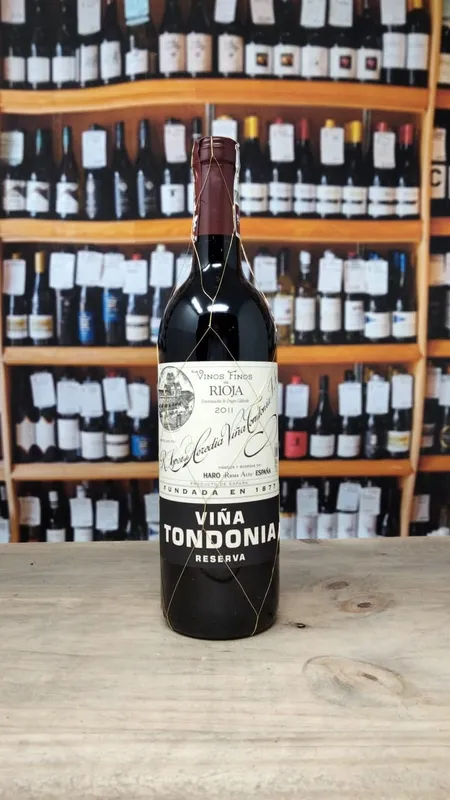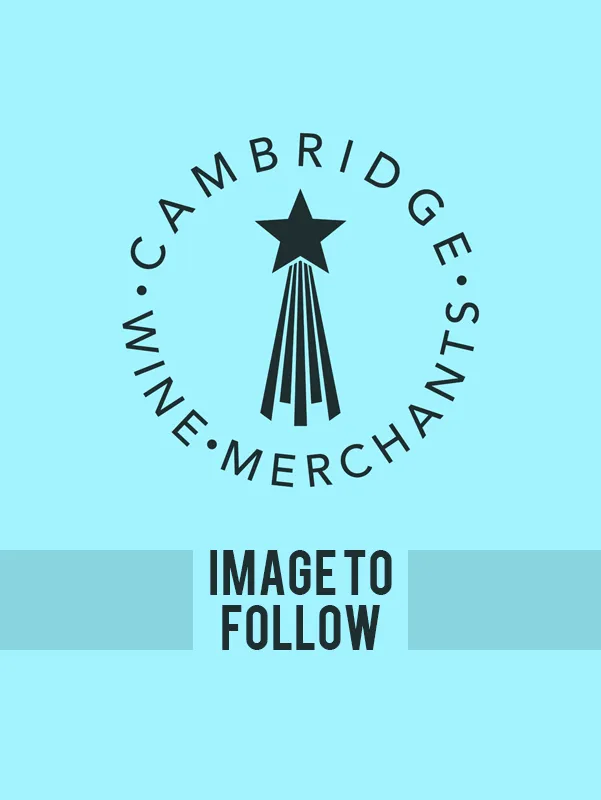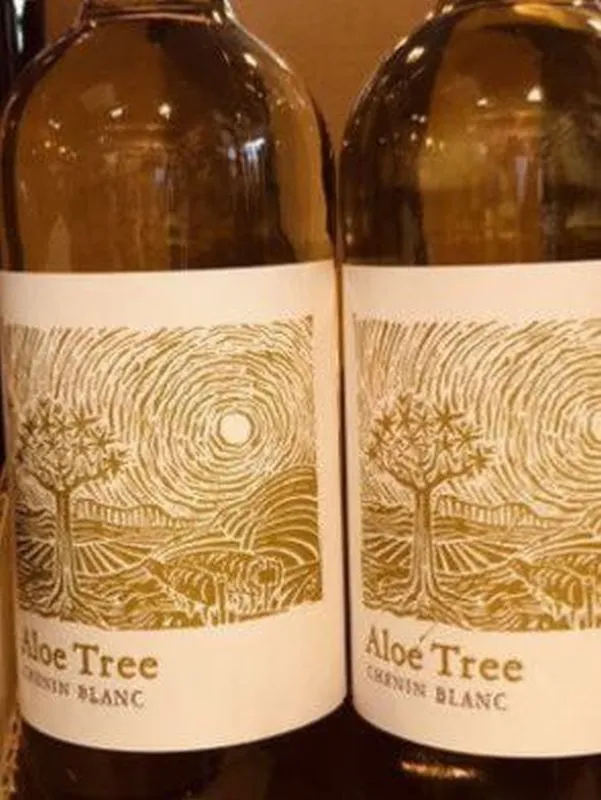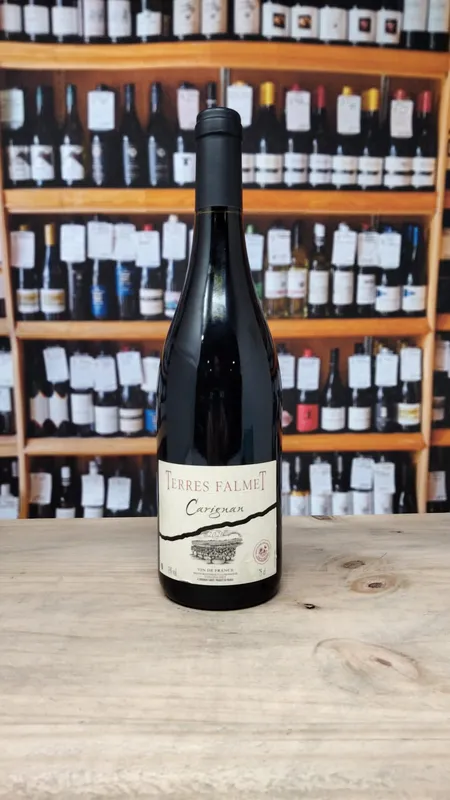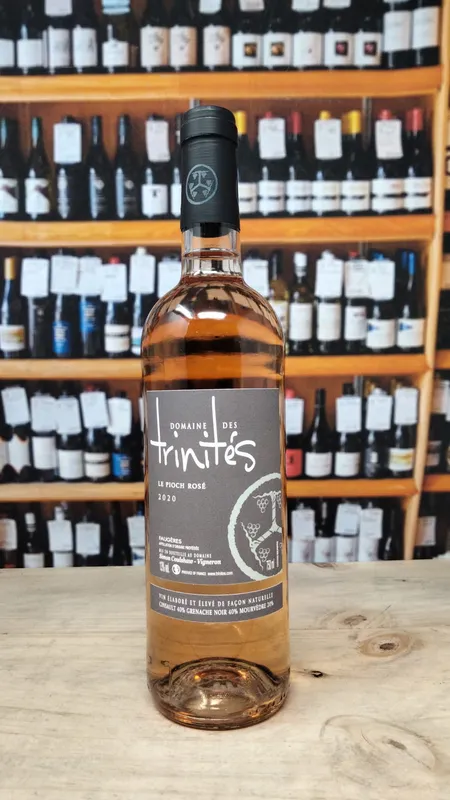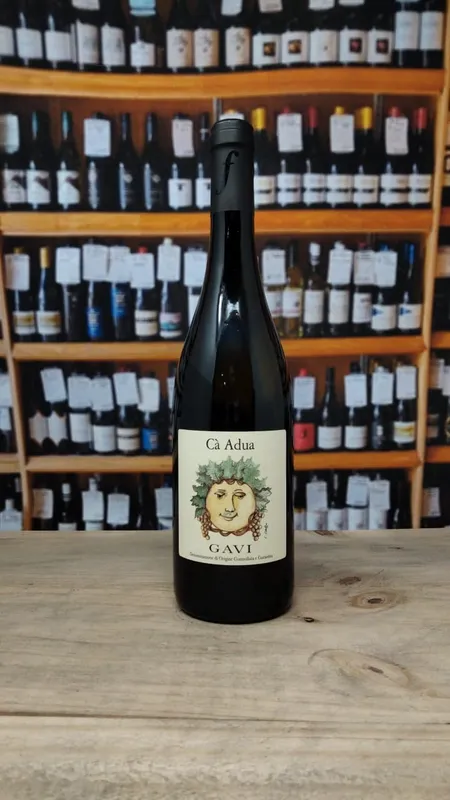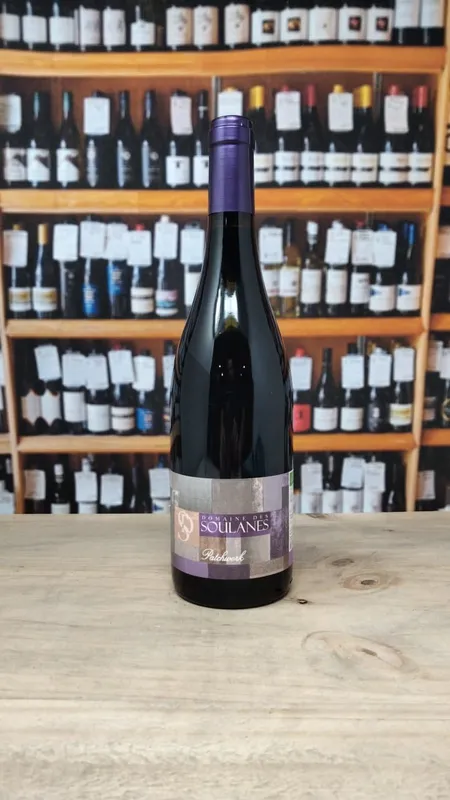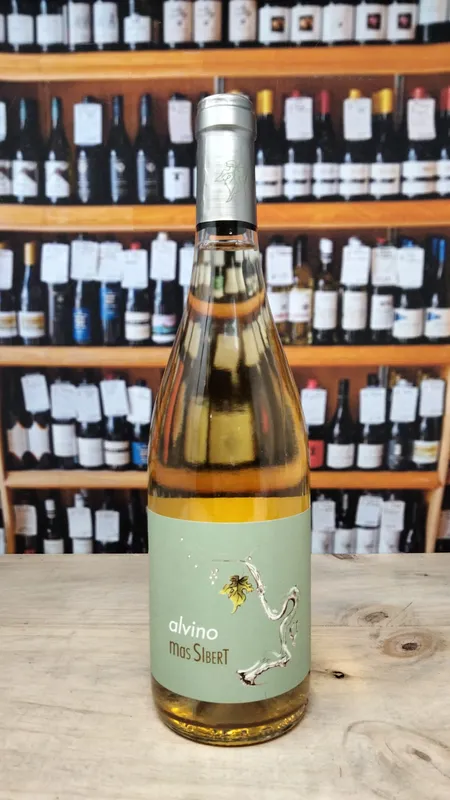There 181 products in this category
Categories
- Case Discounts (68)
- Red Wine (97)
- White Wine (56)
- Champagne and Sparkling (4)
- Rosé Wine (17)
- Fortified and Dessert Wine (7)
- Orange Wine (8)
- Fine Wine (52)
- Vegan and Vegetarian (130)
- Smaller and larger formats (21)
- Organic and Biodynamic (112)
- Low and No Added Sulfites, Natural and Low Intervention (75)
- Bin Ends (4)
- New to the range (26)
- Natural Wines (44)
- Highly rated on Vivino (7)
80
610
20
Domaine Danjou-Banessy
Natural, biodynamic and vegan. Grenache, Carignan and Mourvedre from 80 year old vines, Made without filtering or fining. Pale but gorgeous mid red colour. At first on the nose, you are like "What even is that?". Whatever it is, you know that you like it. Elegant, subtle fruit is intermixed with gentle herb, earth and savoury characters. Deep and wonderful. On the palate the wine is elegant and deep again, but not heavy in the slightest. Ruffled fruit and savoury notes with minerality and real finesse. These wines are like no other from the Roussillon. Outstanding.
80
705
38
Bodegas R. Lopez de Heredia
2012 Vintage Report 2012 was rated as a ‘very good’ vintage in Rioja. The year was defined by the lack of rain which was 25% lower than normal for the region with over a third of the rainfall falling after the harvest. High spring and summer temperatures resulted in picking starting early. The rain finally began to fall on 11th October, extending the harvest by an extra week but all grapes were in by 18th October, which is still early for Haro. Given the dry conditions, yields were down as grapes were small. However, they were also very healthy and López de Heredia are very happy with the quality of the vintage, saying that the wines, ‘continue to develop favourably in terms of freshness and fineness’ and that they have a long ageing potential. The 2012 is a blend of 70% Tempranillo and 20% Garnacho with the remaining 10% a mix of Graciano and Mazuelo. The wine was aged in barrel for 6 years, being racked twice per year and fined with fresh egg whites. Overall, the wine has spent 10 years maturing in the perfect, cool conditions of López de Heredia’s incredible underground cellars and was bottled in January 2022. Tasting Notes The nose of the 2012 Tondonia Tinto Reserva is gloriously open, perfumed and fine. Gentle aromas of jamón and cured leather mingle with subtle notes of raspberry tea and a touch of musky, cedar spice. A sweet red cherry compote top note comes through but, above all, this is remarkably scented, floral and mineral-pure Tondonia. The palate is incredibly fresh with well-defined red fruit and a vibrating hint of orange zest at the back. This is a more accessible and less dense style than the previous two vintages but that is more than compensated for by its superb poise and sense of energy. Reminiscent of the lovely 2009 in its charm, the wine dances on the palate towards the focused, pure finish. Delicious. Drink 2024 (decanted) to 2042. Catriona Felstead MW, Senior Buyer BBR “2012 López de Heredia Viña Tondonia Tinto Reserva (13%)
80
610
20
Domaine Danjou-Banessy
Energy is a word used a lot by the finest Roussillon growers. We don't think there has been a finer example than this extraordinary wine from the freres Danjou. The 2019 is more 'Cote-Rotie' than the 'Crozes like' 2018. A thrilling wine.
80
705
38
Bodegas R. Lopez de Heredia
2012 Vintage Report 2012 was rated as a ‘very good’ vintage in Rioja. The year was defined by the lack of rain which was 25% lower than normal for the region with over a third of the rainfall falling after the harvest. High spring and summer temperatures resulted in picking starting early. The rain finally began to fall on 11th October, extending the harvest by an extra week but all grapes were in by 18th October, which is still early for Haro. Given the dry conditions, yields were down as grapes were small. However, they were also very healthy and López de Heredia are very happy with the quality of the vintage, saying that the wines, ‘continue to develop favourably in terms of freshness and fineness’ and that they have a long ageing potential. The 2012 is a blend of 70% Tempranillo and 20% Garnacho with the remaining 10% a mix of Graciano and Mazuelo. The wine was aged in barrel for 6 years, being racked twice per year and fined with fresh egg whites. Overall, the wine has spent 10 years maturing in the perfect, cool conditions of López de Heredia’s incredible underground cellars and was bottled in January 2022. Tasting Notes The nose of the 2012 Tondonia Tinto Reserva is gloriously open, perfumed and fine. Gentle aromas of jamón and cured leather mingle with subtle notes of raspberry tea and a touch of musky, cedar spice. A sweet red cherry compote top note comes through but, above all, this is remarkably scented, floral and mineral-pure Tondonia. The palate is incredibly fresh with well-defined red fruit and a vibrating hint of orange zest at the back. This is a more accessible and less dense style than the previous two vintages but that is more than compensated for by its superb poise and sense of energy. Reminiscent of the lovely 2009 in its charm, the wine dances on the palate towards the focused, pure finish. Delicious. Drink 2024 (decanted) to 2042. Catriona Felstead MW, Senior Buyer BBR “2012 López de Heredia Viña Tondonia Tinto Reserva (13%)
80
610
20
Domaine Danjou-Banessy
Natural, biodynamic and vegan. Grenache, Carignan and Mourvedre from 80 year old vines, Made without filtering or fining. Pale but gorgeous mid red colour. At first on the nose, you are like "What even is that?". Whatever it is, you know that you like it. Elegant, subtle fruit is intermixed with gentle herb, earth and savoury characters. Deep and wonderful. On the palate the wine is elegant and deep again, but not heavy in the slightest. Ruffled fruit and savoury notes with minerality and real finesse. These wines are like no other from the Roussillon. Outstanding.
80
610
20
Domaine Danjou-Banessy
Energy is a word used a lot by the finest Roussillon growers. We don't think there has been a finer example than this extraordinary wine from the freres Danjou. The 2020 is more 'Cote-Rotie' than the 'Crozes like' 2018. A thrilling wine.
80
685
90
Aloe Tree
Bursting with dark berry flavours of blackberry, dark cherry and plums, this Shiraz has soft and supple tannins and a white pepper finish. The fruit for Aloe Tree hails from the increasingly fashionable west coast of the Cape. Cool nights and sea breezes combine to extend the growing season, resulting in perfectly balanced, ripe grapes. The iconic Aloe Tree image is sure to be familiar to anyone who has travelled widely through the Cape and is an important part of the biodiversity which South Africa is famous for. The characteristic silhouette provides a backdrop to one of the most spectacular wine regions in the world where wines grow in harmony with the thousands of plant species that make up the Cape Floral Kingdom. The grapes come from selected vineyard blocks on the west coast. The extra warmth in this area helps develop the full body and ripe flavours of this variety. The vines are planted on Karoo clay soils that add body and texture to the wine. The vines ages vary from 10 to 25 years old. Once the grapes arrive at the winery, the fruit is gently pressed and only the free run juice is used. Using selected yeasts the juice then undergoes fermentation at between 18-22 degrees Celsius for 5 days. Because of the depth of flavour, it requires less oak treatment compared to other grape varieties and matures on French oak for 3 months to improve body and texture. During fermentation the wine is pumped over 3 times a day for colour extraction.
80
685
90
Aloe Tree
Bursting with dark berry flavours of blackberry, dark cherry and plums, this Shiraz has soft and supple tannins and a white pepper finish. The fruit for Aloe Tree hails from the increasingly fashionable west coast of the Cape. Cool nights and sea breezes combine to extend the growing season, resulting in perfectly balanced, ripe grapes. The iconic Aloe Tree image is sure to be familiar to anyone who has travelled widely through the Cape and is an important part of the biodiversity which South Africa is famous for. The characteristic silhouette provides a backdrop to one of the most spectacular wine regions in the world where wines grow in harmony with the thousands of plant species that make up the Cape Floral Kingdom. The grapes come from selected vineyard blocks on the west coast. The extra warmth in this area helps develop the full body and ripe flavours of this variety. The vines are planted on Karoo clay soils that add body and texture to the wine. The vines ages vary from 10 to 25 years old. Once the grapes arrive at the winery, the fruit is gently pressed and only the free run juice is used. Using selected yeasts the juice then undergoes fermentation at between 18-22 degrees Celsius for 5 days. Because of the depth of flavour, it requires less oak treatment compared to other grape varieties and matures on French oak for 3 months to improve body and texture. During fermentation the wine is pumped over 3 times a day for colour extraction.
80
685
90
Aloe Tree
Aromatic guava and orange blossom jump from the glass - this Chenin Blanc is dry with ripe apples, peaches and a hint of orange peel on the palate. The elegant crisp finish makes this a fantastic wine for all occasions. The fruit for Aloe Tree hails from the increasingly fashionable west coast of the Cape. Cool nights and sea breezes combine to extend the growing season, resulting in perfectly balanced, ripe grapes. The iconic Aloe Tree image is sure to be familiar to anyone who has travelled widely through the Cape and is an important part of the biodiversity which South Africa is famous for. The characteristic silhouette provides a backdrop to one of the most spectacular wine regions in the world where wines grow in harmony with the thousands of plant species that make up the Cape Floral Kingdom. Chenin blanc is well adapted for various soil types, but our premium grapes are grown on medium to lower potential soils. Yield levels are limited by winter pruning and by removing shoots and leaving two or three shoots per spur during early spring. Canopy management is required as it plays a major role in yield and quality to ensure an optimum microclimate within the canopy. With its vigorous growth, medium-sized trellises are required and shoot positioning are done to maximize canopy surface. Grapes are harvested at a minimum of 21.5°Brix, but we aim for 22°Brix. Once the Chenin Blanc grapes are harvested, they arrive at the winery where the fruit is gently pressed and only the free run juice is used. Using selected yeasts the juice then undergoes cold fermentation at 14 degrees Celsius for 2 weeks before lying on the lees for 3 months.
80
610
20
Domaine Danjou-Banessy
Energy is a word used a lot by the finest Roussillon growers. We don't think there has been a finer example than this extraordinary wine from the freres Danjou. The 2020 is more 'Cote-Rotie' than the 'Crozes like' 2018. A thrilling wine.
80
685
90
Aloe Tree
Aromatic guava and orange blossom jump from the glass – this Chenin Blanc is off dry with ripe apples, peaches and a hint of orange peel on the palate. The elegant crisp finish makes this a fantastic wine for all occasions. The fruit for Aloe Tree hails from the increasingly fashionable west coast of the Cape. Cool nights and sea breezes combine to extend the growing season, resulting in perfectly balanced, ripe grapes. The iconic Aloe Tree image is sure to be familiar to anyone who has travelled widely through the Cape and is an important part of the biodiversity which South Africa is famous for. The characteristic silhouette provides a backdrop to one of the most spectacular wine regions in the world where wines grow in harmony with the thousands of plant species that make up the Cape Floral Kingdom. Chenin blanc is well adapted for various soil types, but our premium grapes are grown on medium to lower potential soils. Yield levels are limited by winter pruning and by removing shoots and leaving two or three shoots per spur during early spring. Canopy management is required as it plays a major role in yield and quality to ensure an optimum microclimate within the canopy. With its vigorous growth, medium-sized trellises are required and shoot positioning are done to maximize canopy surface. Grapes are harvested at a minimum of 21.5°Brix, but we aim for 22°Brix. Once the Chenin Blanc grapes are harvested, they arrive at the winery where the fruit is gently pressed and only the free run juice is used. Using selected yeasts the juice then undergoes cold fermentation at 14 degrees Celsius for 2 weeks before lying on the lees for 3 months.
80
475
90
Terres Falmet
From Yves Falmet: My ‘Aramon’ label is made entirely from this grape variety. Among my Carignan vines, the oldest in my vineyard at over 80 years old, there are still a few Aramon vines. This is because the custom at the time was to mix a few grape varieties within the same plot. Aramon used to be one of the most ubiquitous grape varieties in Languedoc, but it has been almost eradicated in recent decades. Like Cinsault, is has been completely discarded in favour of other grape varieties regionally. However, in a quality site such as the Terres Falmet vineyard, when carefully grown, harvested at the peak of ripeness and skilfully vinted, it produces a beautiful, subtly tannic red wine that is fresh and fruity.
80
610
20
Domaine Danjou-Banessy
Natural, biodynamic and vegan. Grenache, Carignan and now (for the first time) Mourvedre from 80 year old vines, Made without filtering or fining. Pale but gorgeous mid red colour. At first on the nose, you are like "What even is that?". Whatever it is, you know that you like it. Elegant, subtle fruit is intermixed with gentle herb, earth and savoury characters. Deep and wonderful. On the palate the wine is elegant and deep again, but not heavy in the slightest. Ruffled fruit and savoury notes with minerality and real finesse. These wines are like no other from the Roussillon. Outstanding.
80
475
90
Foncalieu
Really tasty. Full colour, but light on it's feet. Lots of staisfaction here. This wine is soft pressed after five hours of skin contact to produce a light pink wine. Fermentation occurs under controlled temperatures in stainless-steel tanks. Five days resting on the lees are followed by two days of cold settling. The vines that produce this wine are grafted from Argentine Malbec, which of course comes originally from Cahors in France. The wine maker is Argentine, and he searched all over the Languedoc for a place that would produce the characteristically bright and intense Malbec of his home country. He found this possibility in partnership with winegrowers from the Coteaux d’Ensérune, who follow a 1,000-year-old viticultural tradition marked by an historically un-French willingness to develop varieties from other horizons. The unique soils on the Montandy plateau outside Béziers are red, chalky and acidic with traces of iron. This combined with the classic Mediterranean climate, make the area an ideal home for Malbec The nose is intense with concentrated red berry aromas mixed with hints of springtime flowers. The expressive palate is bursting with gorgeous, ripe fruit followed by a bright, tangy finish. Pair with Mediterranean cuisine like fish with Provençal sauce and seafood paella or try with grilled chicken and fish. Also delightful as an aperitif.
80
475
90
Domaine des Trinités
Possibly the last Rosé to be produced at Trinités? The wine has always been produced for the home market, for the restaurants and bars, in all the major cities. But since the market for such in the last few years has dried up/been somewhat difficult, vigneron Simon Coulshaw has decided to take a break for a while. This 2020 is unlike any previous effort, mostly explained below in Tamlyn Currin's note for jancisrobinson.com. It really is truly wonderful Rosé with real minerality, precision and class. an absolute stunner. 40% Cinsault, 40% Grenache Noir, 20% Mourvèdre. Hand-picked, organically and biodynamically farmed grapes. 100% saignée ie no pressing, just bleeding from the tanks. Winemaker Simon Coulshaw points out that the distinct difference in colour between the 2019 and 2020 (the latter being distinctly lighter in colour) is purely down to the maturity of the anthocynanins in the grapes. In 2019 he left the grapes for an hour and the colour was already dark; in 2020 it spent three or four hours and still didn't throw much colour. Bone dry (less than 0.5 g RS). "This is an outstanding rosé. If only Languedoc producers would sit up and take notice – this is what you can do with rosé. Real wine. Real depth, real texture, acidity so full and exciting and ripe that it made me want to helter skelter, go boogie on Brighton Pier, lick seashells dipped in raspberry sherbet, make cherry bombs filled with lime sorbet and eat them sitting fully clothed in the sea with salt on my tongue and fingers and toes. All of which sounds like fun fun fun, but don't be deceived. This is a serious wine, framed in spice and pink-grapefruit-peel bitterness. Very Good Value (TC)". Score 17/20 jancisrobinson.com When to drink 2021 - 2023 Published on 29 Nov 2021 Date tasted 29 Nov 2021
80
455
22
Fontanassa
A classic Gavi. Straw yellow colour with greenish reflection, aromas of citrus, grapefruit, cut grass, good freshness, persistent and mineral taste with a long lasting finish. "Pronounced flavour intensity, with a creamy, buttery element and some sweet spices, crunchy citrus and stone fruit." Savvas Symeonidis, Goodman Restaurant Mayfair.
80
475
90
Terres Falmet
"Stellar old vine Carignan that is supple, savoury and deeply gorgeous. Yves Falmet's varietal selections from his extraordinary single bank of vines in Creissan, Saint-Chinian go from strength to strength. Make sure you check them all out". Stewart Travers, Senior Buyer
80
475
90
Terres Falmet
"Stellar old vine Carignan that is supple, savoury and deeply gorgeous. Yves Falmet's varietal selections from his extraordinary single bank of vines in Creissan, Saint-Chinian go from strength to strength. Make sure you check them all out". Stewart Travers, Senior Buyer
80
610
20
Domaine des Soulanes
Wonderful new cuvee from the brilliant Daniel and Cathy Laffite based in Tautavel. These guys have some of the most beautiful vineyards we have ever seen, and they are worked with utmost care and respect in an organic way. Glorious Grenache and Carignan deliver so much pleasure with beautiful fruit, great minerality and supple, savoury tannins. DELICIOUS.
80
475
90
Terres Falmet
From Yves Falmet: My ‘A Contre Courant’ label is made from grapes from the oldest Carignan and Grenache plots in my vineyard. But what makes this wine outstanding is its maturation under a veil of yeast for four years. Wines matured under a veil of yeast are characterised by the spontaneous development of yeasts which form a veil on the surface of the wine in contact with the ambient air (during its barrel ageing phase). This technique, which is uncommon for wine because of the risk of acetic souring when stored in containers with ullage, gives it specific aroma and flavour characters of fig, tobacco and candied cherry and a substantial finish on the palate. Of the very few wines matured this way, Vin Jaune from Jura is particularly renowned, but there are no red wines. By maturing a red wine using this technique, I am actually going counter to modern standardised winemaking, hence the name of the wine, which means "flying in the face" of established standards and the "tastefully correct". This is a wine I have created for true wine enthusiasts, those who do not resign themselves to the standardisation of taste, to stereotyped and uniform wines, in short, to the prevailing trend for ultra-conformism.
80
475
90
Mas Sibert
Alvino is made from a curious mix of Albarino, Petite Arvine, Viognier. After a short maceration on skins, the wines is aged in amphoras for 6 months. Quite a rich, round wine, but with nice acidity on the long attractive finish.


